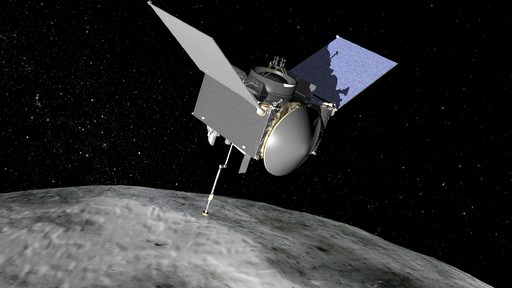-
Tips for becoming a good boxer - November 6, 2020
-
7 expert tips for making your hens night a memorable one - November 6, 2020
-
5 reasons to host your Christmas party on a cruise boat - November 6, 2020
-
What to do when you’re charged with a crime - November 6, 2020
-
Should you get one or multiple dogs? Here’s all you need to know - November 3, 2020
-
A Guide: How to Build Your Very Own Magic Mirror - February 14, 2019
-
Our Top Inspirational Baseball Stars - November 24, 2018
-
Five Tech Tools That Will Help You Turn Your Blog into a Business - November 24, 2018
-
How to Indulge on Vacation without Expanding Your Waist - November 9, 2018
-
5 Strategies for Businesses to Appeal to Today’s Increasingly Mobile-Crazed Customers - November 9, 2018
Countdown Begins For OSIRIS-REx’s Journey To Asteroid Bennu
NASA has set the launch date on September 8 the launch of its first asteroid-sampling mission with the hopes of harvesting a large quantity of samples from a near-Earth asteroid named Bennu. This groundbreaking mission, several years in the making, is the Origins, Spectral Interpretation, Resource Identification, and Security-Regolith Explorer, also known as OSIRIS-REx.
Advertisement
The mission was proposed 12 years ago.
NASA’s OSIRIS-REx spacecraft is slated to be launched from Florida’s Cape Canaveral Air Force Station. The data from the mission will help scientists to improve their understanding about threats being posed by Bennu to earth.
The 2,110-kg fully-fuelled spacecraft will launch aboard an Atlas V 411 rocket during a 34-day launch period that begins on September 8, and reach its asteroid target in 2018. It will travel to near-Earth asteroid Bennu, map its surface using 3-D laser imaging, retrieve samples from the surface and return to Earth.
“We seek samples that date back to the very dawn of our solar system”, OSIRIS-REx principal investigator Dante Lauretta, a professor of planetary science and cosmochemistry at the University of Arizona’s Lunar and Planetary Laboratory, said during a news conference on August 17. He is a professor at the Lunar and Planetary Laboratory at the University of Arizona.
After a careful survey of Bennu to characterise the asteroid and locate the most promising sample sites, OSIRIS-REx will collect between 60 to 2,000 grams of surface material with its robotic arm and return the sample to Earth via a detachable capsule in 2023, the United States space agency said. “We’re going out into the unknown, we’re bringing back scientific treasure”, Lauretta said. The scientists also theorize that Bennu holds clues to the origin of the solar system and the source of the water and organic molecules that may have made their way to Earth.
The OSIRIS-REx spacecraft sits fine atop a United Launch Alliance Atlas 5 at Cape Canaveral’s Space Launch Complex 41 – less than two km away where the Falcon 9 exploded on Thursday in a routine test firing ahead of a planned satellite launch into space. The tiny capsule will deploy a parachute when it’s about 2 miles from the surface, slowing down enough to land gently in the Utah desert.
The recent explosion that occurred on the same site hardly hinders NASA’s mission.
Advertisement
After blast off, OSIRIS-Rex will orbit the sun for a year, then head toward the asteroid. The mission will lay the groundwork for future exploration of asteroids and other small bodies in the solar system. The remainder of this informative article can be found here.





























